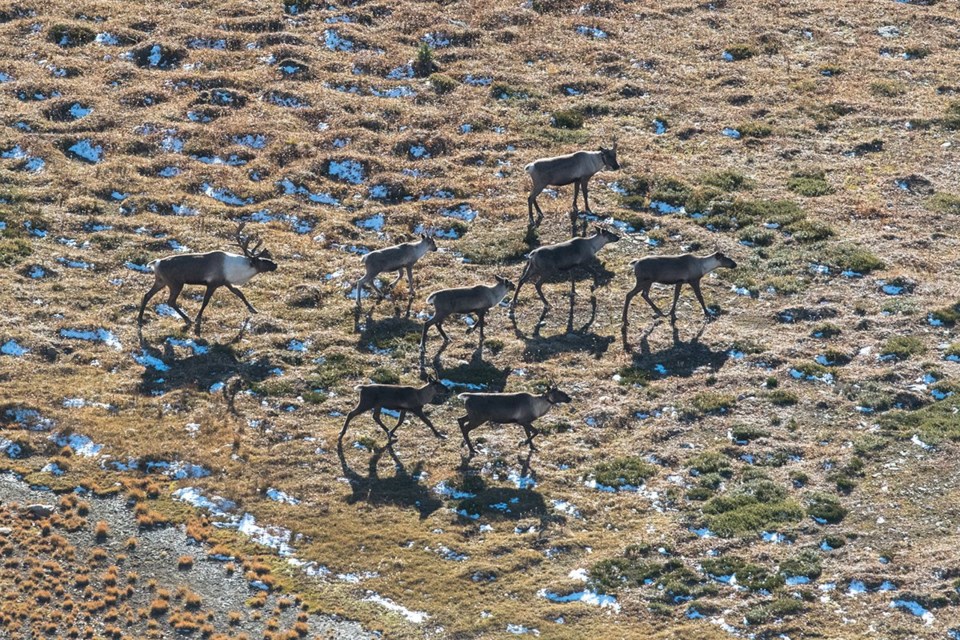Scott Hayes, Local Journalism Initiative Reporter | [email protected]
There’s some optimistic news in the information provided by Parks Canada after its recent annual surveys of the caribou herds.
The effort saw wildlife biologists flying over the Brazeau and the Tonquin areas last month, with an additional flight into the Maligne area as well. They were working to further their understanding of those animal populations and how they are changing.
While more accurate population estimates usually take close to a year, Parks Canada did have minimum counts to offer.
“For the Tonquin, we saw 44 animals, which is a bit higher than the last few years. Really, really good news. We're really excited about that,” said Jean François Bisaillon, project manager for the Jasper Caribou Recovery Program.
“For the Brazeau, we saw a couple caribou and a lot more tracks, so we know that there were more animals. It's pretty much in line with what we've seen over the last few years.”
No caribou were found in the Maligne, which remains consistent with the understanding that that herd has been extirpated since 2018.
The last official count had the Tonquin herd at an estimated 49 to 55 caribou and the Brazeau herd at less than 15 caribou. In Jasper National Park, critical habitat for caribou is protected by law under Canada's Species at Risk Act.
Parks Canada undertakes this annual survey during the autumn, as it is the easiest season of the year to find the animals gathered in larger groups during the rut. Fresh snow also makes it easier to find their tracks when spotting by air.
In addition to determining herd counts, biologists also collect scat samples without disturbing the animals. Those samples get sent to a lab for further DNA analysis, which helps the biologists to determine the minimum number of calves and cows.
It also helps them to identify and track individual animals over the years.
“It's a really good non-invasive way for us to look at population and also population composition: how many males, how many females and monitor them through time,” Bisaillon said.
The data collected from both of these methods is critical to understanding how the caribou populations are changing. Processing that information takes time, but it does end up with what Bisaillon called “a more precise, more robust population estimate.” He said results should be available within the first two months of 2023.
Seasonal closures
Seasonal closures for caribou conservation took effect on Tuesday. These closures affect the Tonquin, Brazeau and À la Pêche caribou ranges until May 15, 2023.
Closing critical habitat prevents the creation of human-made packed snow trails from the valley bottom to high-elevation areas. Caribou live in high-elevation habitat, which protects them from wolves who can’t move in deep snow without sinking.
A full listing of closures along with a detailed map of the areas can be found by visiting Parks Canada’s website.
The Tonquin, Brazeau, and North Boundary areas will reopen for backcountry recreation between May 16 and Oct. 31, 2023.




